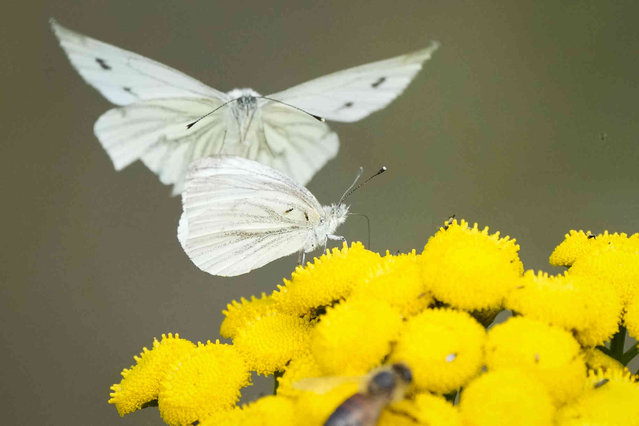
Butterflies feed on flowers nectar in a forest outside Tallinn, Estonia, Tuesday, September 3, 2024. (Photo by Sergei Grits/AP Photo)
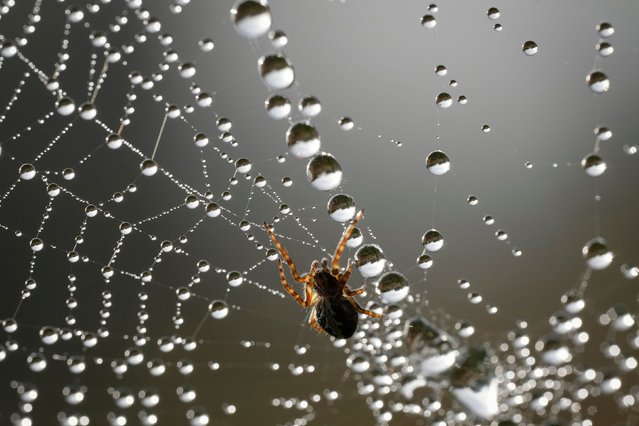
A spider waits for his prey at the center of its net covered by water droplets in the forest outside Tallinn, Estonia, Friday, September 20, 2024. (Photo by Sergei Grits/AP Photo)
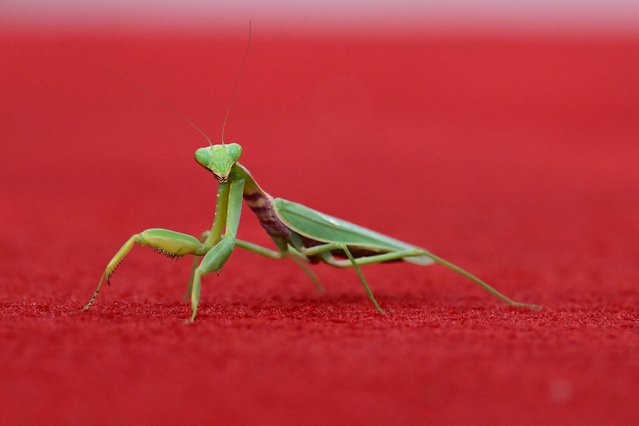
A praying mantis is pictured on the red carpet before the arrival of the cast of the movie “April” presented in competition during the 81st International Venice Film Festival at Venice Lido, on September 5, 2024. (Photo by Marco Bertorello/AFP Photo)
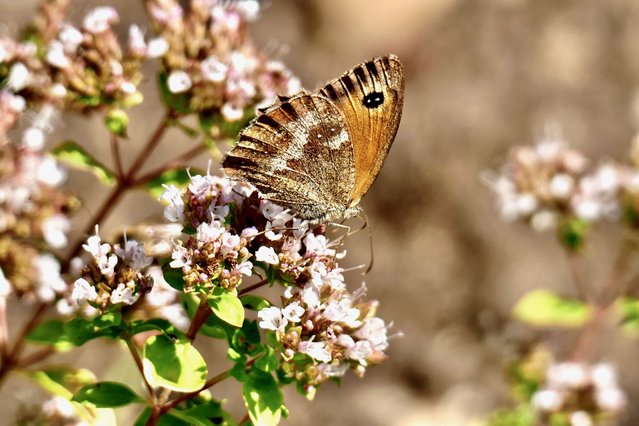
A meadow brown butterfly in UK on September 18, 2024. The Butterfly Conservation has announced that 2024 has seen the lowest numbers of butterfly populations in it 14-year history. It follows the conclusion of the Big Butterfly Count, which sees participants logging numbers and types spotted across the country. Counting in short 15-minute bursts, those taking part spotted seven butterflies per 15 minutes, a reduction of nearly 50% on last year's average of 12. More than 80% of butterfly species have seen a reduction in recorded numbers compared to last year, including the worst summer in the history of the count for Common Blue, Small Tortoiseshell, and Scotch Argus species. (Photo by Geoffrey Swaine/Rex Features/Shutterstock)
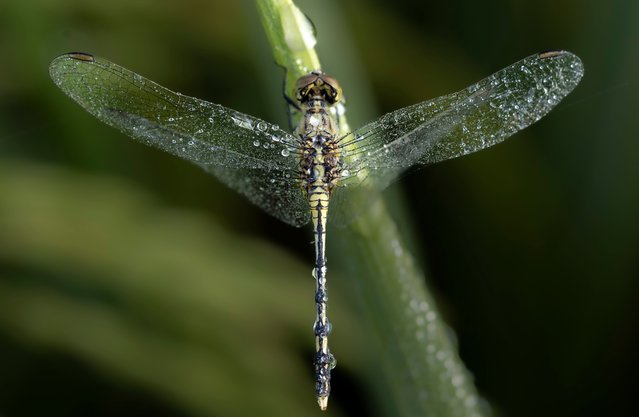
A wet dragon fly lands in a rice field before sunrise in Kathmandu, Nepal, 08 October 2024. (Photo by Narendra Shrestha/EPA/EFE)
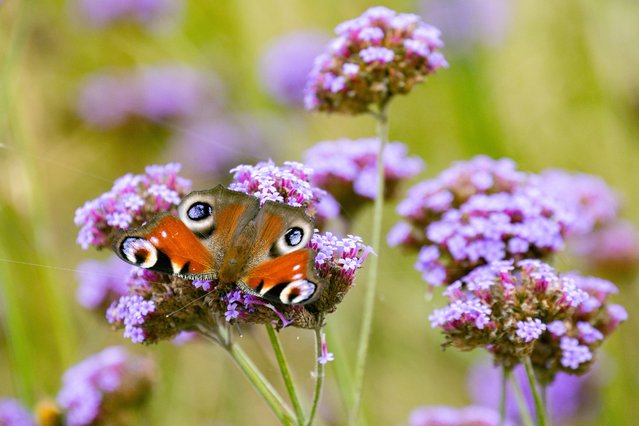
A peacock butterfly collects nectar in a meadow in the grounds of Schwerin Castle, in the north of Germany on September 4, 2024. (Photo by Ulrich Perrey/dpa)
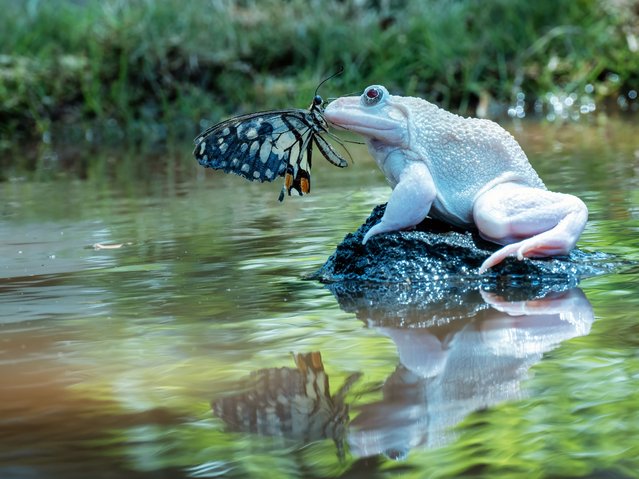
A lime butterfly makes a risky landing on a frog in Jakarta, Indonesia in the second decade of October 2024. (Photo by Dzul Dzulfikri/Animal News Agency)
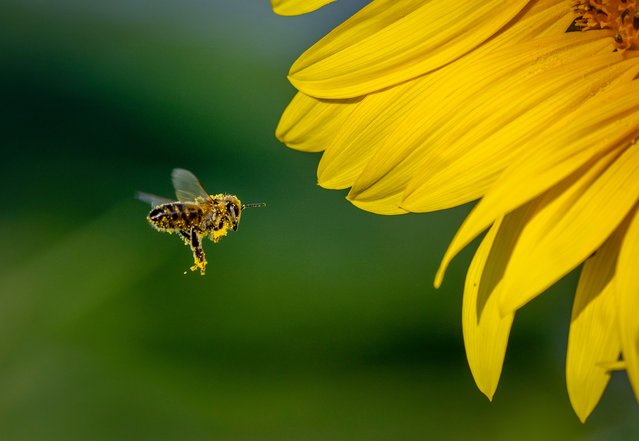
A bee flies to a sunflower on a field in the outskirts of Frankfurt, Germany, Wednesday, August 28, 2024. (Photo by Michael Probst/AP Photo)
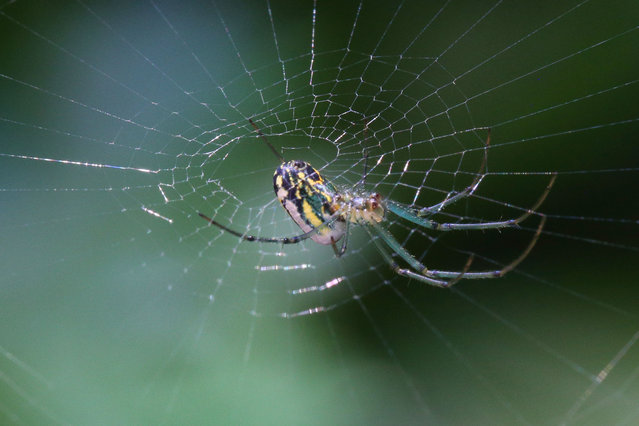
An orchard orbweaver spider (Leucauge venusta) in a web in Toronto, Ontario, Canada, on September 1, 2024. (Photo by Creative Touch Imaging Ltd/NurPhoto/Rex Features/Shutterstock)
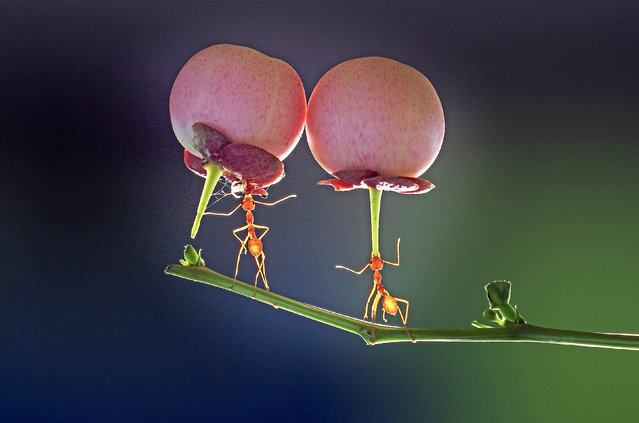
The strength of a weaver ant carrying fruit in Indonesia in the last decade of August 2024 is equivalent to the average man or woman picking up a minibus. (Photo by Ridho Arifuddin/Solent News)
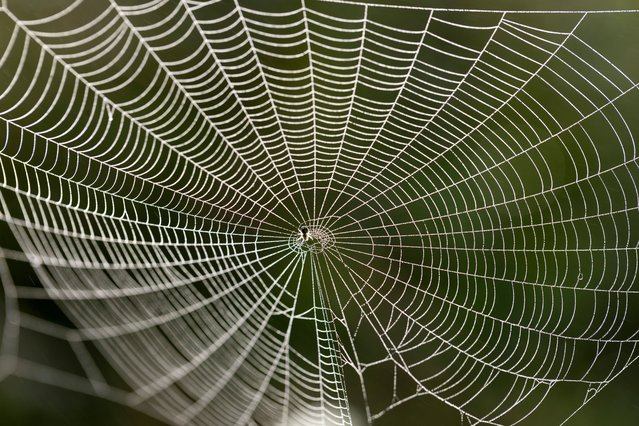
A spider spins a web early in the morning in a rice field in Kathmandu, Nepal, 08 October 2024. (Photo by Narendra Shrestha/EPA/EFE)
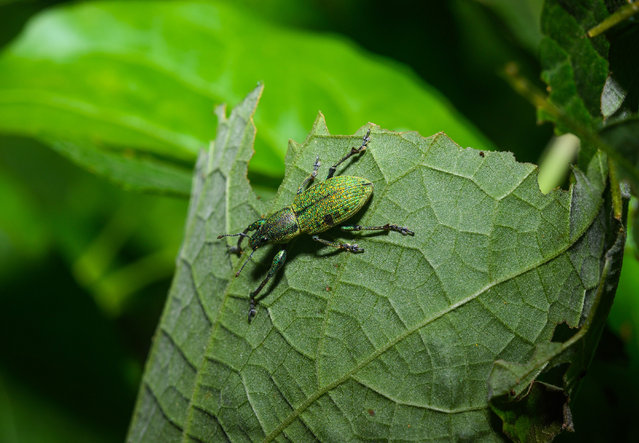
On August 31, 2024, a pair of Green Immigrant Leaf Weevils (Polydrusus formosus) was observed mating on a leaf in a forest at Tehatta, West Bengal, India. The Green Immigrant Leaf Weevil is a species of broad-nosed weevil belonging to the family Curculionidae, subfamily Entiminae. This weevil feeds on the leaves and buds of many hardwood and fruit trees, including birch, beech, oak, poplar, hawthorn, various shrubs, and Prunus species. The Green Immigrant Leaf Weevil is reddish-green in color, with a narrow face and a lined pattern on its back. It measures about 0.2-0.27 inches (5.3-6.8 mm) in length. This species is also considered a pest, as it feeds on crops like strawberries and raspberries. Adults are most commonly observed from April through August. These beetles lay their eggs in the bark or leaves of host plants. (Photo by Soumyabrata Roy/NurPhoto/Rex Features/Shutterstock)
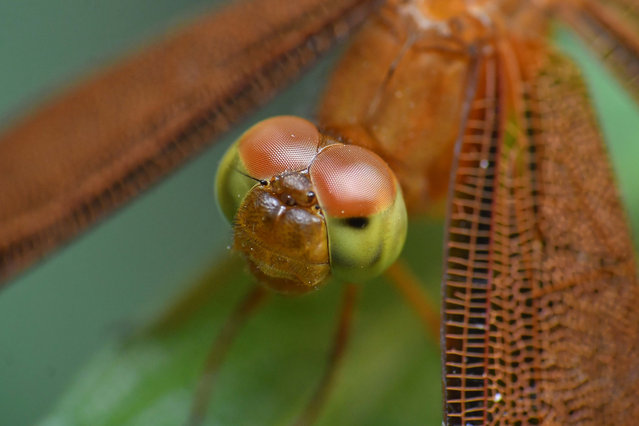
A dragonfly sits on a branch in a garden in Nagaon District, Assam, India, on September 20, 2024. (Photo by Anuwar Hazarika/NurPhoto/Rex Features/Shutterstock)
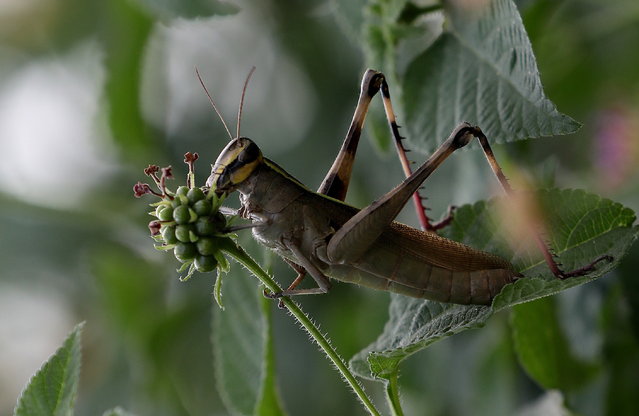
A Syrbula admirabilis grasshopper rests on a tree at the Yamuna biodiversity park in New Delhi, India, 16 October 2024. Syrbula admirabilis, known generally as admirable grasshopper, is a species of slant-faced grasshopper in the family Acrididae. Other common names include the handsome grasshopper and the handsome locust. (Photo by Harish Tyagi/EPA)

A shield bug basks in the sun on a city meadow in Tallinn, Estonia, Monday, September 9, 2024. (Photo by Sergei Grits/AP Photo)
20 Oct 2024 00:25:00,
post received
0 comments
